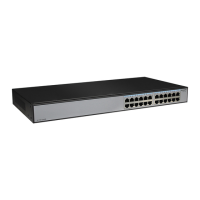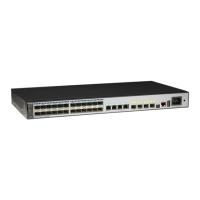NOTE
After an IBGP peer is added to a peer group, the system automatically creates the IPv6 peer in the BGP
view. Besides, the system enables this IBGP peer in the IPv6 address family view.
----End
8.10.3 Creating a Pure EBGP Peer Group
When BGP4+ has multiple EBGP peers that belong to the same AS, you can create an EBGP
peer group to simplify the management of routing policies. All the peers in a pure EBGP peer
group must have the same AS number.
Context
Do as follows on the BGP4+ switch:
Procedure
Step 1 Run:
system-view
The system view is displayed.
Step 2 Run:
bgp as-number
The BGP view is displayed.
Step 3 Run:
group group-name external
A pure EBGP peer group is configured.
Step 4 Run:
peer group-name as-number as-number
The AS number of the peer group is set.
Step 5 Run:
ipv6-family [ unicast ]
The BGP IPv6 unicast address family view is displayed.
Step 6 Run:
peer group-name enable
The peer group is enabled.
Step 7 Run:
peer ipv6-address group group-name
The IPv6 peer is added to the peer group.
After an EBGP peer is added to the peer group, the system automatically creates the EBGP peer
in the BGP view. Besides, the system enables this EBGP peer in the IPv6 address family view.
When creating a pure EBGP peer group, you need to specify the AS number of the peer group.
S6700 Series Ethernet Switches
Configuration Guide - IP Routing 8 BGP4+ Configuration
Issue 01 (2012-03-15) Huawei Proprietary and Confidential
Copyright © Huawei Technologies Co., Ltd.
531

